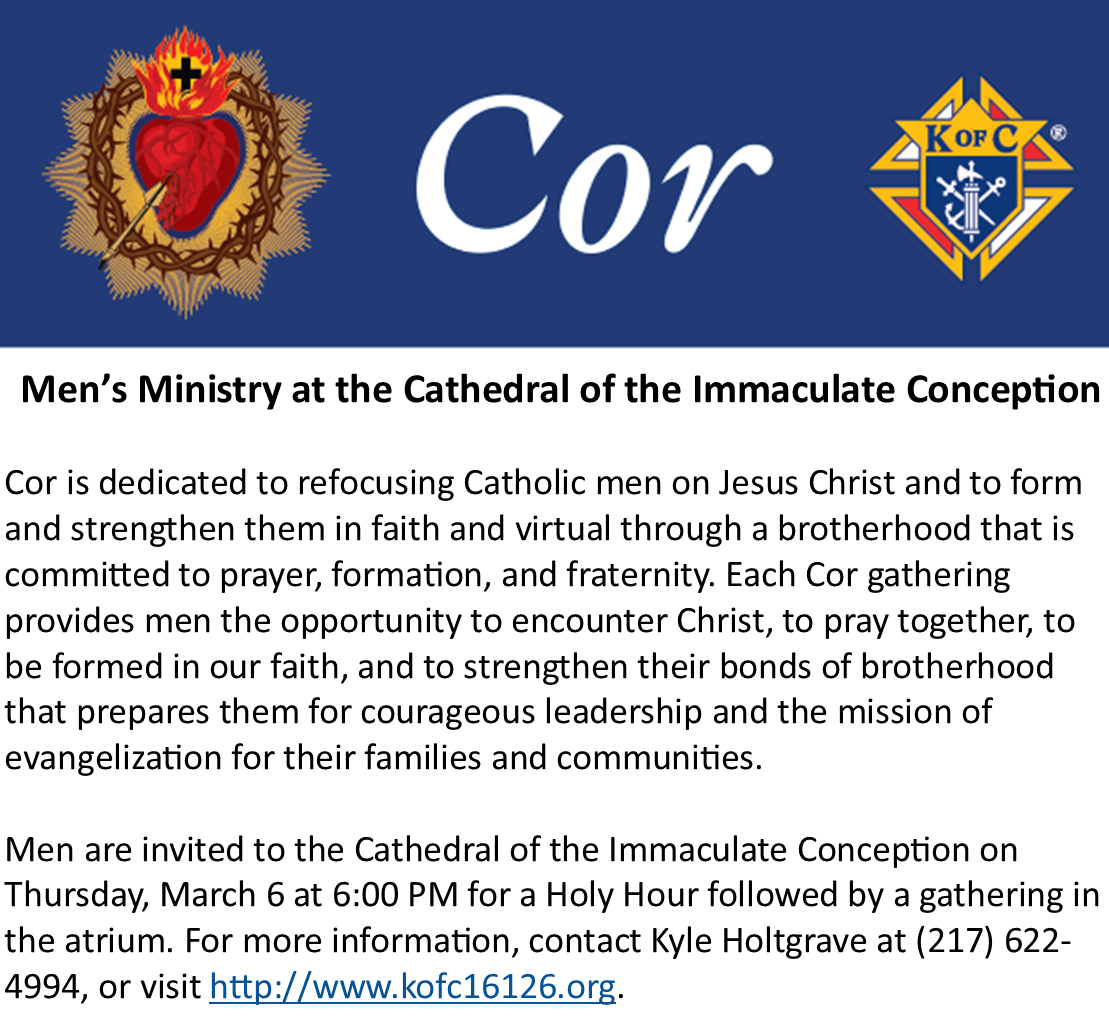
Stations of the Cross
There are so many Catholic practices that we do throughout the Church year that just sort of exist in the Catholic ethos; if you’re like me (at least before I entered seminary), I never stopped twice to think about why we do them or where they came from. Perhaps for you, Stations of the Cross is one of those things.
I can remember praying the Stations of the Cross during Lent during my grade school days—but to be honest, if I didn’t go to a Catholic grade school and seminary, I still don’t know if I’d know what they are or how to pray them!
Simply put, the Stations of the Cross (also known as the Via Crucis or “Way of the Cross”) are a devotion meant to help us pray through the Passion and Death of Jesus. It consists of 14 “stations,” or small meditations on different moments of the Passion—from His condemnation to death to His burial in Joseph of Arimathea’s tomb. You’ve probably noticed in just about every Catholic church that the “Stations” are often located along the side walls of the church.
Traditionally, when the stations are prayed (often during Lent or on the Fridays of the Church year, as Friday is the day that commemorates the Lord’s death on the cross), the priest or leader walks from station to station, sometimes accompanied by a cross-bearer and/or candles, representing the journey of walking with Jesus as He endures His final Passion. Between stations, it has also become traditional to sing a stanza of the 13th-century hymn “Stabat Mater,” which sings of Mary’s sufferings as Jesus endures His crucifixion. (Interestingly enough, the “Stabat Mater” used to be a sequence sung before the Gospel on the Feast of Our Lady of Sorrows, but it has since been suppressed as a sequence.)
The Stations of the Cross as a devotion can be traced back to the days of the Emperor Constantine and began in the Holy Land itself. There, it became traditional over the years for the many pilgrims to the holy sites to walk the very path that Jesus strode on His way to Calvary, now known as the Via Dolorosa (or Sorrowful Way). As they would walk the “way of the cross,” they would stop at various points to commemorate an aspect of Christ’s Passion, thus developing a very early version of our current devotion. The current number and form of the devotion was standardized much more recently, probably in the 15th and 16th centuries.
The Stations of the Cross is a beautiful devotion, but one that I think needs a bit of practice in order to become “comfortable” with. It can be a little overwhelming the first time, what with all the standing and genuflecting and singing and movement. But do yourself a favor and stop in once or twice on it—once it becomes a little less foreign to us, it’s a beautiful way to enter into the journey that is our Lent: the journey of walking with Christ to the Cross as He endures His passion, but always with the hope that at Easter, His glory will dawn anew.
In our parish, the Stations of the Cross are offered on the Fridays of Lent at 5:30 pm. Please feel free to join us and visit our fish fry afterwards!
Keep spreading joy!
Fr. Friedel
Lenten Book Study
Saints and Social Justice
Are you looking for a way to deepen your faith this Lent while meeting new people and building community within the parish? Join Blessed Sacrament’s Lenten book study! This group will meet every Sunday during Lent from 4-5 pm to discuss the Saints and Social Justice – A Guide to Changing the World by Brandon Vogt. This book provides short, easy to read biographies of 14 saints whose lives and faith provide guidance and encouragement for us today. The first book study will be March 9 at 4 pm in the basement rectory. All are welcome! Please contact Carolyn Oldenburg for more information: 217.473.5088.
Looking for more to do during Lent? Visit our parish website for All Things Lent. Links to different free online programs as well as the Hallow blog and LifeTeen videos
Lent began yesterday! If you have a child, ages 5-12, we are providing a daily Lenten email. Please sign up under Holy Heroes.
Please email Lsarnowski@bsps.org with questions.
Perpetual Adorers
Please sign in when you do a shift! And please write your last name; we are still trying to figure out which shifts are covered and which are not and this is very helpful.
Questions? Contact Lisa Sarnowski at Lsarnowski@bsps.org.
This year's Lenten Service Project will be a parish-wide food packing event. We'll join as a community to pack bags of non-perishable foods to be donated to a third world country. So far we have raised enough money to feed 1,700 people! Our next step will be to get volunteers - this is a great opportunity for a family of school age children and a parent(s) to work together.


Men's Club fish fries begin Friday March 7th in the Blessed Sacrament School cafeteria. Dinners are $12 for adults and $5 for children. Includes all you can eat walleye only. Walleye, catfish fried and blackened, shrimp, cheese pizza, mac and cheese. Sides of coleslaw, French fries, or baked potato. 5:00 to 7:00 pm.

See what's on Formed this week! Click on the button below to get a synopsis for the week.
Check out "How to Lent" on Formed - sign up is below.
From other parishes...
Springfield Right to Life and Two Hearts Pregnancy Resource Center
Annual Breakfast Fundraiser
Join Two Hearts Pregnancy Resource Center and Springfield Right to Life for our Annual Fundraising Breakfast featuring keynote speakers Jim and Annette McDermott!
When: March 29, 2025, 8:30 AM, check-in begins at 7:45 AM
Where: Erin's Pavilion, Southwind Park, Springfield
Attend this free event and help raise funds to support life-affirming work in our community. Table Hosts are needed!
Mass will be offered at Little Flower Church - 7:30 AM
To reserve your table or RSVP, call 217-523-2700, email us at springfieldrtl@gmail.com, or visit springfieldrtl.org for details.



Please join the Pregnancy Care Center for its 41st Annual Spring Luncheon on Monday, March 31st , 2025, at the Northfield Inn and Conference Center. Doors will open at 10:45 a.m. for a silent auction and bake sale. A buffet lunch will be served at noon. Raffle chances to win $200 cash will also be available at the event for $10. Entertainment this year is provided by local musician, Diane Dietz. Seats can be reserved by calling the office at (217) 525-5630 or by using the QR code below. Thank you for supporting the mission of the Pregnancy Care Center since 1978!




Springfield Deanery Meeting
All Catholic women are invited to attend the Springfield Deanery Meeting, Tuesday, March 18th, 10 am at St Cabrini Parish, 1020 N. Milton, Springfield. Erica Smith, MPH, Executive Director, Hospital Sisters Mission Outreach Program will be our guest speaker. Sr Ann Pitsenberger will join her in participating.
“Founded in 2002 by the Hospital Sisters of St. Francis, Mission Outreach exists to improve the health and wellness of people across the globe through the responsible donation of medical supplies, equipment, and support services” (hshs.org).
Soups & Salad Lunch will be provided by Linda Denny, St. Cabrini parishioner. A $5 donation for lunch is suggested. We will also discuss our future meeting dates and have updates on parish, diocesan and national programs. Register for door prizes, too! Please RSVP for the meeting by March 12th to: Linda Denny,217-691-9432 dennyml@comcast.net. or Deborah Pilapil,217-361-7165 debpil@yahoo.com
We also invite you to join us on Facebook! https://facebook.com/groups/561791791821229/
Singles Upper 50s and Above: Are you looking for a renewed sense of purpose & belonging? Register today for a life-changing RENEW weekend retreat at the Pallottine Retreat Center in Florissant, MO (30 min from downtown St. Louis), on March 28-30, 2025. Take a chance and get involved... you won't regret it! Visit www.RenewRetreats.org, e-mail renewretreat.stl@gmail.com, or call (314) 703-1002 for details.

Sent by Lisa Sarnowski on Thursday, March 6 at 2:00PM